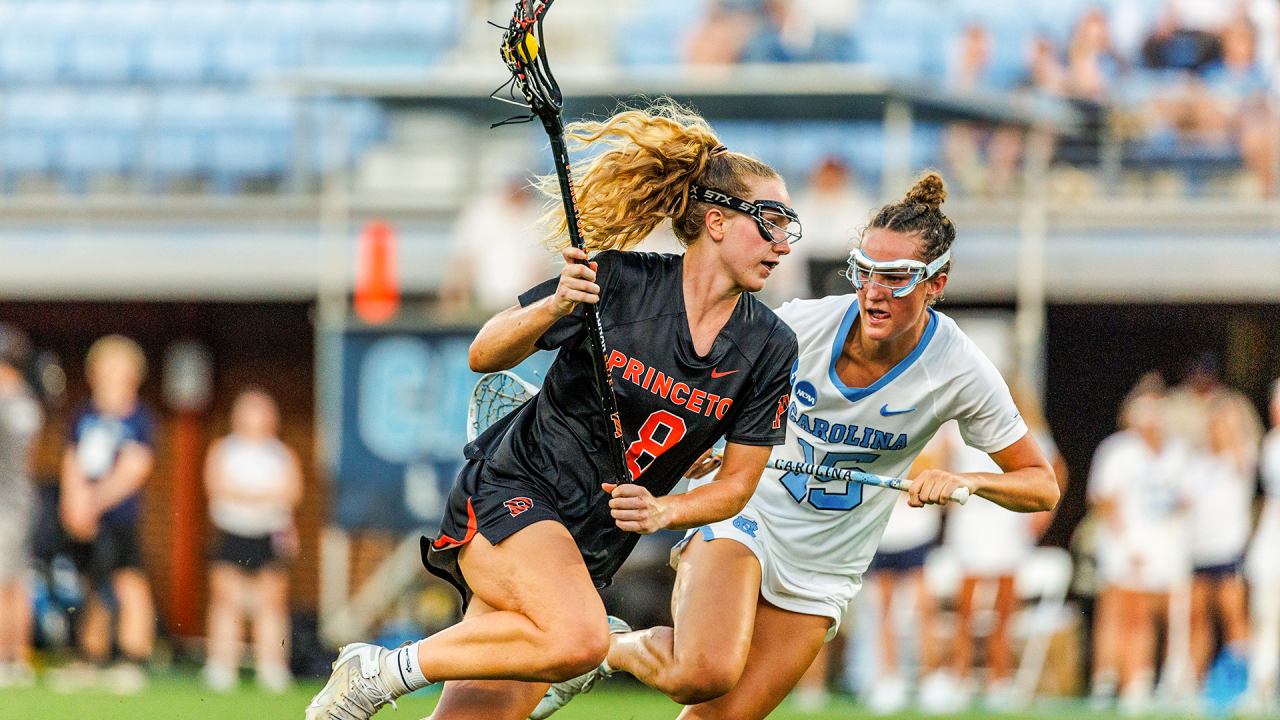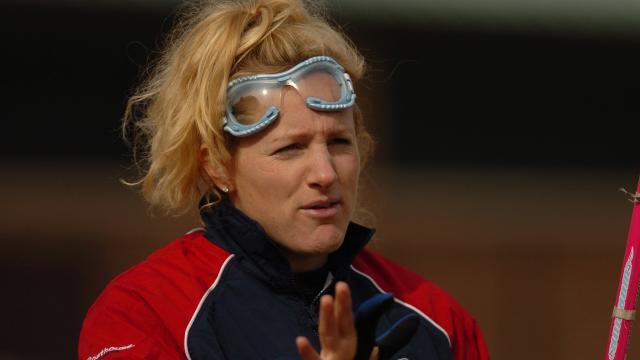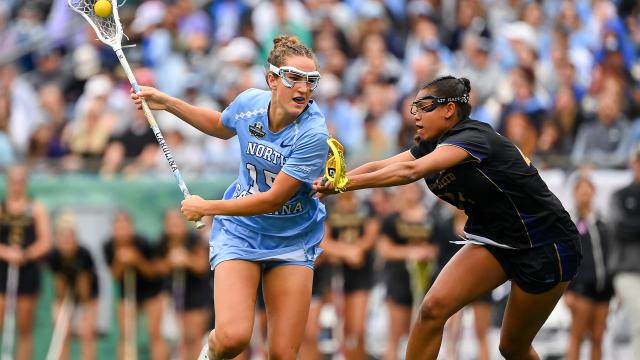
A Turning Point for Women’s Lacrosse? College Coaches Consider Bold Moves
THINK BIG.
That’s the message awaiting more than 750 women’s lacrosse coaches at the annual IWLCA Convention this week in St. Pete Beach, Florida.
With growing national interest in women’s sports and women’s lacrosse set to make its Olympic debut in 2028, the college coaches association has called for bold thinking and even bolder leadership to capitalize on these tailwinds.
Much of convention will revolve around next steps following the Nov. 12 release of a 35-page white paper by CarrSports Consulting, which identified strategic priorities to unify and grow women’s lacrosse based on interviews and surveys of more than 1,000 stakeholders in the sport.
Separately, USA Lacrosse has surveyed college coaches to identify trends and gauge sentiment around revenue sharing, rules, recruiting and other topics of interest.
NOW or NEVER ⌛️ With the House Settlement in place, a yearlong research project complete, women’s sports exploding and LA28 on the horizon, women’s lacrosse advocates aim to meet the moment. pic.twitter.com/kSWCDKDBqw
— USA Lacrosse Magazine (@USALacrosseMag) November 20, 2025
“The timing of this really was to lead up to our convention, because our opening session on Wednesday is Legacy & Momentum,” IWLCA executive director Liz Robertshaw said last week after the white paper came out. “It is all addressing this. We're excited for what we have planned for that event.”
The convention brings together coaches from all collegiate divisions. They want to capitalize on the growth that has already happened to further expand the sport and its popularity. The IWLCA commissioned the white paper more than a year ago.
“Everything's going to be connected to this,” Robertshaw said. “Because that's how it should be. Because that will then give us a springboard into the future.”
Legacy and Momentum
According to the white paper:
- There were 525 college women’s lacrosse programs in 2024, double the amount of two decades earlier.
- A record 14,423 fans attended the 2025 NCAA Division I women’s lacrosse national championship weekend in Foxborough, Massachusetts. North Carolina defeated Northwestern in the final.
- ESPN coverage of women’s lacrosse has increased 200 percent over the last five years.
And yet, there are concerns in the report (and survey) around how programs will be affected by the House vs. NCAA settlement as well as how to compete with other emerging sports.
“There’s an old saying, if you do what you’ve always done, you’re going to get what you’ve always gotten,” North Carolina head coach Jenny Levy said. “We’ve hit a place where we weren’t growing and advancing the way other sports were.”
“It was truly all about investing in ourselves,” IWLCA president Kelly Gallagher said.
CarrSports followed three tenets — grow the game, promote the sport and prioritize safe play — in proposing these five strategic priorities that the IWLCA will now consider how best to implement and in what timeline.
Establish a unified vision and brand.Simplify rules and game administration.Attract and retain exemplary game officials.Enhance the championship experience.Expand and maximize media exposure.
“It kind of gave us a roadmap and maybe permission to explore these things further,” Gallagher said.
The IWLCA will challenge its membership to think big, think outside the box and be open to suggestions that address challenges outlined by the white paper — before their focus turns to the upcoming college lacrosse season.
“It allows us as an association to really work behind the scenes in phases to strategically put some of these things into place and have those conversations,” Robertshaw said. “While they’re busy winning championships, we’re going to be working with people on how we can elevate this.”
Coaches have found common ground before. In 2015, the IWLCA led the charge to prohibit recruiting contact with prospective student-athletes before Sept. 1 of their junior year of high school. The IMLCA — the college men’s lacrosse coaches association — cosigned the legislation that made it through NCAA channels and has since become the standard.
The IWLCA also has worked to adjust rules like implementing a restraining line, boundaries, free movement and running clock on free positions. That background gives leaders hope they can establish a unified vision and brand that speaks to programs across all levels.
“This project gives us an opportunity to move the game forward, bring our whole coaches organization together and say, ‘Oh, yes, we do need some changes,’” Levy said. “Whether I agree with the solutions that we come up with or not, we know that the priorities and our principles are very simple and that it gives us a roadmap to follow. Maybe we have some differences of opinions, but it will push us forward into the future of our game, which I’m very passionate about.”
Competitive Balance
USA Lacrosse also recently surveyed college coaches about the effects of the House Settlement and changes they’d like to see in the game. Responses came from the coaching staffs of 33 Division I, 12 Division II and 39 Division III schools.
Notably, just two Division I coaches who responded indicated that the settlement had a positive effect on their program, both noting increases in scholarships and funding.
And of the 84 coaches who responded to the survey across all three divisions, 69 said the settlement would widen the gap between top programs and others.
Phrases like “rich get richer” and “smaller programs will struggle” appear repeatedly in responses. Even Division III coaches worry about trickle-down effects.
Coaches across all sports are worried about such imbalance. That they're saying these things about a sport that has produced just five Division I champions in the last 20 years — three of which (Northwestern, Maryland and North Carolina) have combined to win 17 national titles in that span — is especially concerning.
The transfer portal has accelerated the imbalance. Several coaches cited top mid-major players transferring to Power 4 schools as a growing issue.
State of Play
Women’s lacrosse rules have become too complex and difficult to adjudicate, some say. As a result, the games are too long (especially for TV), the pool of qualified officials has shrunk and the fan experience has suffered.
“We've made all these small changes, which have really confused players, officials and coaches, and have made a pretty messy game,” Levy said. “[We’ve done this] instead of just finding solutions to the things that we've identified as threats and turning them into opportunities to make the changes that we need.”
Rule fatigue is real. “Stop changing the rules,” was a common plea in USA Lacrosse’s survey of college coaches. At the same time, they flagged player safety, video review and the 8-meter/free position as areas for improvement. Green cards — introduced in 2023 to curtail physical play outside the critical scoring area — also came up in several responses as slowing the pace of the game and adding to the confusion.
The IWLCA hopes a new governance structure at the NCAA will help streamline rule changes.
“We may not have to wait two years,” Robertshaw said. “Things might be able to change sooner, because there's a playing rules subcommittee that goes to the rules committee that goes to the oversight committee to make more immediate changes.”
Officials Pipeline
No one’s more frustrated by frequent rule changes than those who must interpret and adjudicate them. Rules also differ depending on the discipline and level of play. An official who covers youth, high school, college, professional and international women’s lacrosse might have five different rulebooks to memorize.
“We heard over and over that the game for officials is very complex,” said Gerald O’Dell, vice president of management consulting at CarrSports. “It is inconsistent, it makes it very difficult for them to consistently make calls. It's very frustrating for them.”
Simplifying the rules and game administration while still ensuring player safety is a balancing act, but essential to refueling the pipeline of women’s lacrosse officials.
“Those kinds of things will hopefully make our officiating pool attractive to come into,” Robertshaw said.
Championship Experience
This year’s NCAA Division III women’s lacrosse championship drew attention not for the outstanding play, but the remote location.
Whereas the Division I women’s semifinals and final were played alongside the men’s championships at an NFL venue (Gillette Stadium) in a large metropolitan market (Boston), the Division II and III women’s games were tucked away in Salem, Virginia.
The inequity and inaccessibility prompted Tufts coach Courtney Shute to speak out, reigniting the conversation around a unified championship weekend and the 2021 NCAA Gender Equity Report concluding that lacrosse had the largest discrepancy between student-athlete experience and revenue opportunities between the genders.
The IWLCA is continuing to work with the NCAA to improve these experiences for women’s teams. “It's not, ‘You need to do this.’ It’s, ‘How can we work together to make it better?’” Robertshaw said of the collaboration. “The championships are a prime example of that. There's constant communication and there's an openness [to change].”
Pace of Play
Creating more equal opportunities also would bring more eyes to the sport. The final priority outlined in the CarrSports white paper — expanding and maximizing media exposure — plays directly off the other priorities.
Getting games to fit into a two-hour linear TV window while still making the player experience safe and enjoyable is imperative.
“We've seen a lot of sports change rules in order to accommodate the fan experience,” Levy said.
Last season, Maryland’s 19-11 win over Penn State took 2 hours, 13 minutes. When their men’s teams played, the game took 1:55. The Cornell men’s 15-10 win over Princeton in the regular season took 2:02. When the women played, Princeton’s 12-11 win took 2 hours, 27 minutes. Syracuse’s 14-13 double overtime win over Stanford lasted 2 hours, 52 minutes.
Asked in the USA Lacrosse survey what area most needs to be addressed in the next rules change cycle, college coaches most frequently identified pace of play. Draw and free position setups, green cards, stick checks after goals and video reviews have come under increased scrutiny for prolonging games.
“Game length and flow, it’s talked about in the rooms down at the convention,” Robertshaw said. “It's talked about in your publications. It's talked about and widely known that our game length and flow need to keep moving forward and improve.”
Olympic Movement
While many college coaches see the Olympics as an inflection point for the sport, skepticism abounds because the sixes (6v6) format differs drastically from NCAA play. Some who responded to the USA Lacrosse survey worry that cost-saving pressures could push schools toward sixes rather than field lacrosse, reducing roster sizes and opportunities.
Then again, if sixes gains enough steam, perhaps it could become a fall sport — with offsetting seasons the way college rugby has evolved with seven- and 15-a-side variants.
Despite the mixed sentiments, the executive summary of the CarrSports white paper positioned the 2028 Olympics as “an unparalleled opportunity for promoting the sport’s popularity and expansion.”
Forward Movement
Twelve years ago, renowned sports executive and current Big East commissioner Val Ackerman authored a white paper that revolutionized women’s basketball and positioned the sport for its current surge in popularity. The IWLCA believes this project will have a similar effect.
“Women’s lacrosse has to make sure that we are not just standing by and watching things happen to us,” Robertshaw said. “And instead, we make decisions that demonstrate our value, our growth, our potential and our need on college campuses.”
“Changes are required to both secure and strengthen our future,” she added. “It's not just going to happen because we want it to, because we love our sport. It's really going to happen if we are strategic — if we are phase-driven and move forward in a way that grows every single division, every single program and pushes our professional leagues and national teams even higher, as well as inspires and encourages all the young ones who look up to these women's lacrosse, players, coaches and programs.”
Justin Feil
Justin Feil grew up in Central PA before lacrosse arrived. He was introduced to the game while covering Bill Tierney and Chris Sailer’s Princeton teams. Feil enjoys writing for several publications, coaching and running and has completed 23 straight Boston Marathons. Feil has contributed to USA Lacrosse Magazine since 2009 and edits the national high school rankings.

Categories
Tags
Related Articles




